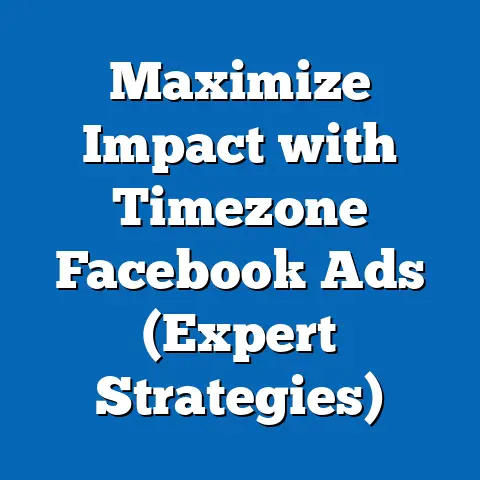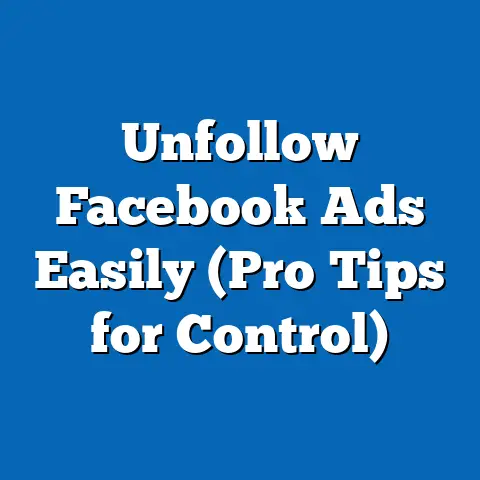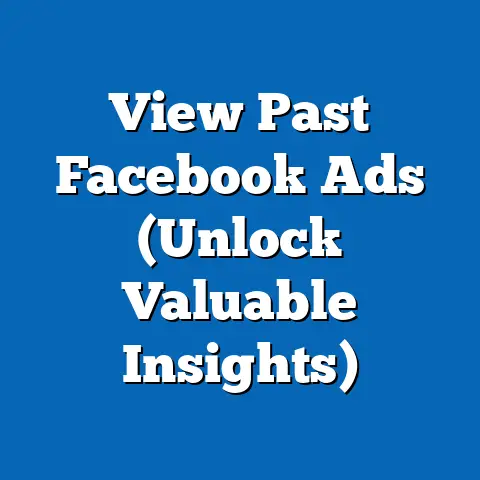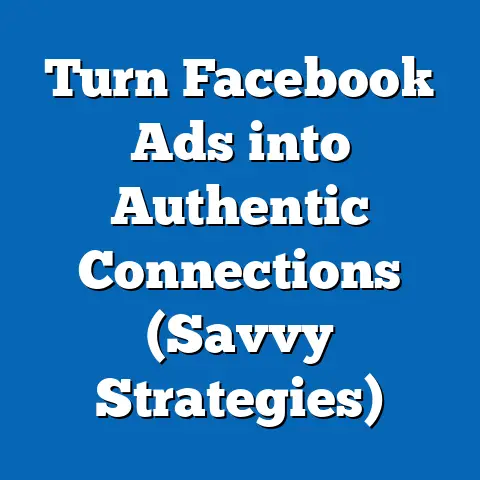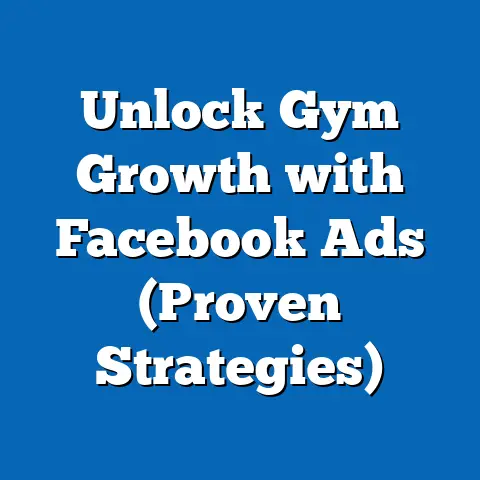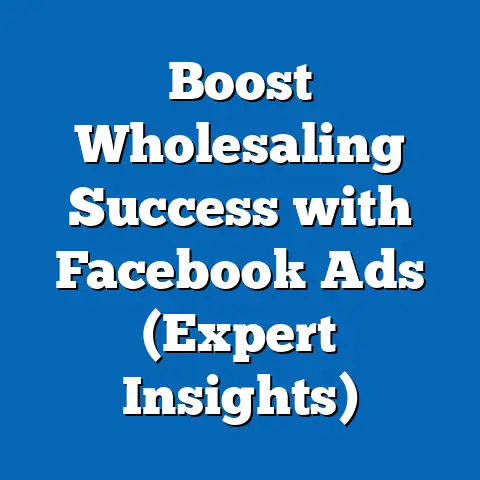Perfecting Facebook Ads Audience Size (Expert Insights)
Have you ever felt like you’re shouting into a void with your Facebook Ads, wondering where your ideal customer is hiding? You’re not alone! So many businesses struggle with reaching the right people, and a huge part of that comes down to audience size. According to recent studies, ads targeted to audiences of 1,000-10,000 users can yield conversion rates up to 20% higher than those aimed at broader audiences. This statistic highlights the critical importance of audience size in Facebook advertising, and in this guide, I’ll break down how to find your “sweet spot” and maximize your ROI.
I’ve spent years helping businesses navigate the sometimes-turbulent waters of Facebook advertising, and I’ve learned firsthand that audience size isn’t just a number; it’s the key to unlocking effective campaigns. It’s a Goldilocks situation – not too big, not too small, but just right. Let’s dive in!
Understanding Audience Size in Facebook Ads
Before we get into the nitty-gritty, let’s define what we mean by audience size. In the context of Facebook ads, audience size refers to the estimated number of people you’ll reach with your ads based on the targeting criteria you set. This is the potential audience, not necessarily the number of people who will actually see or engage with your ads.
Facebook gives us incredible power to define and adjust our audience size through a variety of targeting options. These options can be broadly categorized as:
- Demographics: Age, gender, location, education, job title, relationship status – the basic building blocks.
- Interests: Hobbies, passions, pages they like, topics they follow. This is where you tap into what really makes your audience tick.
- Behaviors: Purchase history, device usage, travel habits, online activities. This dives into how they act online.
- Custom Audiences: These are your own data goldmines! Upload customer lists, website visitors, app users, or engagement data to create highly targeted audiences.
- Lookalike Audiences: Find people who are similar to your best customers. This is a powerful way to expand your reach while maintaining relevance.
I remember when I first started using Facebook Ads, I was blown away by the sheer number of targeting options. It felt like I could target anyone, anywhere, doing anything. But with great power comes great responsibility – and the potential for a lot of wasted ad spend!
The implications of audience size on ad performance are significant. Let’s look at how audience size affects different aspects of your campaigns:
- Reach: A larger audience gives you the potential to reach more people. However, it doesn’t guarantee that those people are actually interested in your product or service.
- Engagement: A smaller, highly targeted audience is more likely to engage with your ads. This can lead to higher click-through rates, more comments and shares, and ultimately, better results.
- Conversion Rates: Reaching a highly qualified, smaller audience often results in higher conversion rates because they are more likely to be interested in what you’re offering.
Takeaway: Understanding audience size is the foundation of successful Facebook advertising. Use Facebook’s targeting options to precisely define your audience and consider the implications of your audience size on reach, engagement, and conversion rates.
The Sweet Spot for Audience Size
The million-dollar question: what’s the “sweet spot” for audience size? Unfortunately, there’s no magic number that works for everyone. The ideal audience size depends on several factors, including your budget, your industry, your ad objective, and the overall market.
However, I can share some general guidelines based on my experience and insights from industry experts:
- For broad brand awareness campaigns: Aim for an audience size of 1 million or more. This allows you to reach a wide range of people and increase brand recognition.
- For lead generation campaigns: A sweet spot can be anywhere from 50,000 to 500,000 people, depending on the specificity of your niche. You want a big enough pool to find qualified leads, but not so big that you’re wasting money on irrelevant prospects.
- For sales conversion campaigns: Smaller, highly targeted audiences (e.g., 1,000-10,000) are often the most effective. These audiences are typically made up of people who are already familiar with your brand or have shown a strong interest in your product or service.
- For retargeting campaigns: Retargeting audiences are inherently smaller since they consist of people who have already interacted with your business. The size will vary, but the focus should be on the quality of the audience.
Let me give you an example. I worked with a local bakery that wanted to increase sales of their custom cakes. Initially, they were targeting a broad audience of people who lived in their city and were interested in “cakes.” The results were mediocre.
We then narrowed the audience to people who were interested in “wedding cakes,” “birthday cakes,” and “custom cakes,” and who had recently engaged with local wedding planning pages. The audience size shrunk dramatically, but the conversion rate skyrocketed. Why? Because we were now targeting people who were actively looking for the exact product they were offering.
Here’s a quick look at the trade-offs between targeting larger versus smaller audiences:
Larger Audiences:
- Pros: Wider reach, potential for more impressions, lower cost per impression (CPM).
- Cons: Lower engagement rates, lower conversion rates, potential for wasted ad spend, less targeted.
Smaller Audiences:
- Pros: Higher engagement rates, higher conversion rates, more targeted, less wasted ad spend.
- Cons: Limited reach, higher cost per click (CPC), potential for ad fatigue.
Takeaway: There’s no one-size-fits-all answer to the perfect audience size. Consider your campaign goals, budget, and industry when determining the appropriate audience size. Don’t be afraid to test different audience sizes and analyze the results to find what works best for you.
Tailoring Your Audience Based on Campaign Goals
It’s crucial to understand that different marketing objectives require different audience sizes. Trying to force a square peg into a round hole will only lead to frustration and wasted money.
Let’s break down how to align audience size with specific campaign goals:
- Brand Awareness: For brand awareness, you want to reach as many people as possible. Therefore, a larger audience is generally recommended. The goal is to get your brand in front of as many eyeballs as possible, even if they don’t immediately convert.
- Website Traffic: For driving traffic to your website, a medium-sized audience (e.g., 100,000-500,000) is often ideal. You want to reach enough people to generate a significant amount of traffic, but not so many that you’re wasting money on irrelevant clicks.
- Lead Generation: As mentioned earlier, lead generation often benefits from a more targeted audience. Focus on reaching people who are likely to be interested in your product or service and who are willing to provide their contact information.
- Sales Conversions: For sales conversions, precision is key. Target people who are ready to buy. This might involve retargeting website visitors, targeting people who have shown a strong interest in your product, or using lookalike audiences based on your best customers.
To illustrate this further, let’s consider a hypothetical example:
Imagine you’re launching a new line of organic dog food.
- Brand Awareness: You might target a broad audience of dog owners in your country, using interests like “dog lovers,” “pet owners,” and “organic food.”
- Website Traffic: You could target a slightly narrower audience of dog owners who are interested in “healthy dog food” or “natural pet products.”
- Lead Generation: You might run a lead ad offering a free sample of your dog food in exchange for their email address. Target people who have shown an interest in similar products or who have recently searched for “organic dog food.”
- Sales Conversions: You could retarget people who have visited your website or added your dog food to their cart, but haven’t completed the purchase.
When evaluating the effectiveness of your chosen audience sizes, here are some key metrics to consider:
- Reach: How many unique people are you reaching with your ads?
- Impressions: How many times are your ads being shown?
- Click-Through Rate (CTR): What percentage of people who see your ad are clicking on it?
- Cost Per Click (CPC): How much are you paying for each click?
- Conversion Rate: What percentage of people who click on your ad are converting into customers or leads?
- Cost Per Acquisition (CPA): How much are you paying for each customer or lead?
Takeaway: Align your audience size with your specific marketing objectives. Brand awareness campaigns may benefit from larger audiences, while high-conversion campaigns may perform better with smaller, highly-targeted groups. Track the right metrics to evaluate the effectiveness of your audience sizes and make data-driven decisions.
Advanced Targeting Techniques for Perfecting Audience Size
Once you understand the basics of audience size, you can start exploring more advanced targeting techniques to really dial in your strategy.
Here are some of my favorite advanced targeting strategies:
- Retargeting: Retargeting is one of the most powerful tools in your arsenal. It allows you to show ads to people who have already interacted with your business, such as website visitors, app users, or people who have engaged with your content on Facebook.
- Geo-Targeting: Geo-targeting allows you to target people based on their location. This is particularly useful for local businesses or businesses that offer location-specific products or services.
- Demographic Segmentation: Demographic segmentation involves dividing your audience into smaller groups based on demographic factors like age, gender, education, or income. This allows you to create more targeted and relevant ads for each group.
- Interest-Based Targeting: Interest-based targeting allows you to target people based on their interests and hobbies. This is a great way to reach people who are passionate about a particular topic or activity.
- Behavior-Based Targeting: Behavior-based targeting allows you to target people based on their online behavior, such as their purchase history, device usage, or travel habits. This is a powerful way to reach people who are likely to be interested in your product or service.
- Lookalike Audiences: Lookalike audiences allow you to find people who are similar to your best customers. This is a great way to expand your reach while maintaining relevance.
And remember, Facebook’s algorithm plays a significant role in audience targeting. The algorithm is constantly learning about your audience and optimizing your ads for performance. Here are some tips on how to leverage it to your advantage:
- Give the algorithm time to learn: Don’t make too many changes to your ad sets too quickly. Give the algorithm time to gather data and optimize your ads.
- Use broad targeting options: Sometimes, the algorithm can find the best audience for you by using broad targeting options.
- Test different targeting options: Experiment with different targeting options to see what works best for your business.
- Monitor your results: Keep a close eye on your results and make adjustments as needed.
I’ve found that constantly monitoring and optimizing my audience size over time is crucial for long-term success. Here’s how I do it:
- Regularly review your audience insights: Facebook Audience Insights provides valuable information about your audience, such as their demographics, interests, and behaviors. Use this information to refine your targeting.
- A/B test different targeting options: Run A/B tests to compare the performance of different targeting options.
- Analyze your conversion data: Use your conversion data to identify which audience segments are most likely to convert.
- Adjust your bids: Adjust your bids based on the performance of different audience segments.
Takeaway: Use advanced targeting techniques like retargeting, geo-targeting, and demographic segmentation to refine your audience sizes. Leverage Facebook’s algorithm to your advantage and continuously optimize your audience size over time.
Common Pitfalls and How to Avoid Them
Even with the best intentions, it’s easy to make mistakes when selecting audience sizes. Here are some common pitfalls to avoid:
- Relying too heavily on broad targeting: While broad targeting can be effective for brand awareness, it’s often not the best approach for lead generation or sales conversions.
- Ignoring audience insights: Facebook provides a wealth of information about your audience. Ignoring this information is like driving blindfolded.
- Making too many changes too quickly: As mentioned earlier, the Facebook algorithm needs time to learn. Making too many changes too quickly can disrupt the learning process and negatively impact your results.
- Not testing different audience sizes: The only way to find the perfect audience size for your business is to test different options.
- Setting and forgetting: Don’t just set your audience size and forget about it. Continuously monitor your results and make adjustments as needed.
Here are some expert opinions on how to avoid these pitfalls:
- “Don’t be afraid to get granular with your targeting. The more specific you can be, the better.” – Neil Patel, Digital Marketing Expert
- “Always start with a clear understanding of your target audience. Who are they? What are their interests? Where do they spend their time online?” – Amy Porterfield, Online Marketing Expert
- “Test, test, test! The only way to know what works best for your business is to experiment with different targeting options and audience sizes.” – Gary Vaynerchuk, Entrepreneur and Marketing Expert
I’ve learned that ongoing testing and iteration are essential for refining audience size strategies. Here’s my process:
- Set a clear goal: What do you want to achieve with your ad campaign?
- Develop a hypothesis: What audience size do you think will be most effective for achieving your goal?
- Create multiple ad sets: Create multiple ad sets with different audience sizes.
- Run your ads: Run your ads for a set period of time.
- Analyze your results: Analyze your results to see which audience size performed best.
- Adjust your strategy: Based on your results, adjust your strategy and run another test.
Takeaway: Avoid common mistakes like relying too heavily on broad targeting or ignoring audience insights. Continuously test and iterate your audience size strategies to find what works best for your business.
Conclusion
Perfecting your Facebook Ads audience size is a continuous process of learning, testing, and optimizing. By understanding the fundamentals of audience size, aligning your audience size with your campaign goals, using advanced targeting techniques, and avoiding common pitfalls, you can unlock the full potential of Facebook advertising and drive successful ad campaigns.
Remember, the “sweet spot” for audience size is not a fixed number. It’s a moving target that depends on your specific business, your campaign goals, and the ever-changing landscape of Facebook advertising.
So, embrace the challenge, experiment with different strategies, and never stop learning. Your ideal audience is out there waiting to be discovered!
Call to Action
Now it’s your turn! What are your experiences with audience targeting in Facebook ads? Share your insights and tips in the comments below. And don’t forget to follow this publication for more expert insights and tips on digital marketing and advertising trends!

